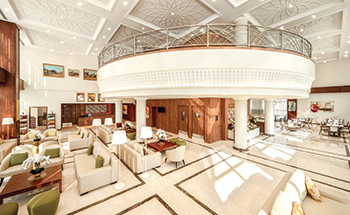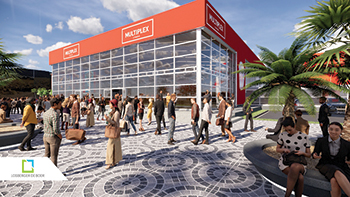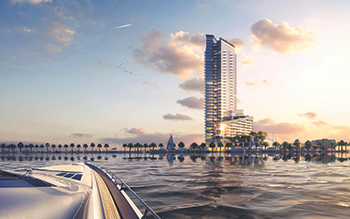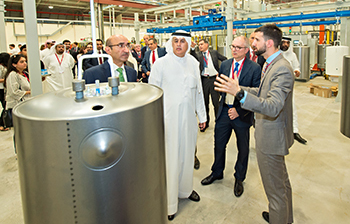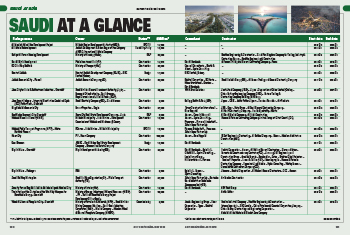
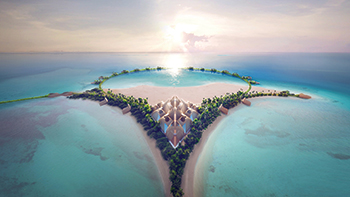 A rendering of an island concept for the project.
A rendering of an island concept for the project.
Aimed at tapping the trillion-dollar-plus fast-growing global luxury tourism industry, the Red Sea Project on Saudi Arabia’s western coast is a vital part of the country’s diversification plans as laid out in the Vision 2030.
Set against a breathtaking backdrop of 28,000 sq km of untouched landscape that stretches across coastal islands to inland dunes and mountains, the project is aimed to put the kingdom on the global tourism map and pump an estimated SR22 billion ($5.86 billion) annually into the country’s GDP.
The project is “an incredibly unique offering, pairing sustainability and luxury tourism to create an unrivalled range of experiences”, John Pagano, the CEO of the developer The Red Sea Development Company (TRSDC), tells Gulf Construction.
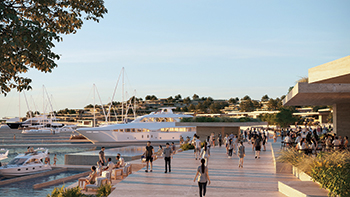 |
|
Phase One will include a yacht marina and leisure and lifestyle facilities. |
The masterplan of the ambitious project presents a broad variety of facets, including ultra-luxury mono-island properties to resort-style hubs islands, mountain retreats and desert getaways. The destination will also have a dedicated airport designed to handle one million passengers per year.
The vision for The Red Sea Project is underpinned by sustainability, Pagano says. The focus at the project from the outset has been on protecting, preserving and enhancing the natural environment within the operational area, he says, adding the design and development of the site includes the creation of a destination that not only matches the ever-evolving expectations of modern luxury travellers but at the same time enhances the local environment.
Pagano continues: “We are committed to managing visitor numbers to protect the site from over-tourism and work towards our goal of net-positive impact on the environment. The destination will be powered 100 per cent by renewable energy and we plan to implement policies requiring zero waste-to-landfill and a total ban on single-use plastics. We are also seeking to develop new technologies and solutions to continually improve our environmental footprint.”
To that end, the final masterplan preserves approximately 75 per cent of the destination’s islands for conservation and designates nine islands as sites of significant conservation value.
According to Pagano, work on the masterplan, which was approved by the TRSDC’s board in November 2018, will be undertaken in phases.
The plan was developed in partnership with Wimberly, Allison, Tong & Goo (WATG), which worked with the developer on the architectural design, while Buro Happold, worked on engineering.
“The masterplan was informed by the largest marine spatial planning simulation ever undertaken, which modelled the environmental impact of the development,” he says.
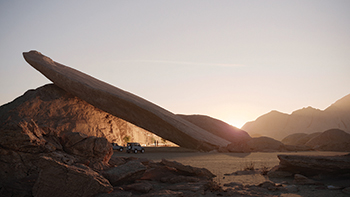 |
|
A concept for a mountain retreat. |
Simulation was undertaken in partnership with the King Abdullah University of Science and Technology (Kaust).
“We are also working with some of the world’s leading architectural firms on concept designs for the assets we plan to develop on the site,” Pagano says.
Work on the project has launched with the commencement of Phase 0, with the opening of the Project Base Camp in February 2019 that focuses on the essential enabling works required to develop the site. These included temporary roads, jetties, worker accommodation and corporate offices. Construction is due to begin on the workers’ residential village – construction village – in the second quarter of this year to provide accommodation for approximately 10,000 workers. The village will eventually expand to house a total of 30,000 workers.
Also commencing in Q2 2019 is the construction of the management village, which will include corporate offices and residential accommodation for the team responsible for overseeing the development of the destination. Once complete, the Management Village will replace the base camp as the centre of TRSDC operations on site and house a wider range of project management and corporate functions.
Phase One of the destination will see the construction of 14 hotels across five islands and two inland resorts, creating more than 3,000 hotel rooms. There will also be a new airport, a yacht marina, leisure and lifestyle facilities, as well as supporting logistics and utilities infrastructure.
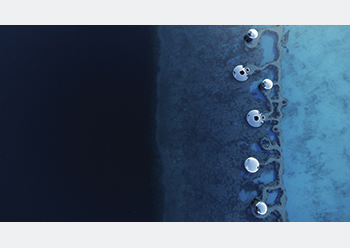 |
|
Some 10 per cent of the planned hotels in Phase One will be built on the mono-islands. |
Approval has already been secured for Phase One including budget and funding. This phase is due for completion by 2022.
“The majority of development in Phase One will focus on the main hub island, which will be connected to the mainland by a bridge. The hub island is planned to feature nine hotels, a central marina, a golf course and a range of entertainment and commercial activities. These will be designed to create mix of centrally located assets as well as facilities that are specific to each hotel. The hub island will include around 10,000 sq m of commercial retail space,” says Pagano.
Some 10 per cent of the planned keys in the Phase One will be built on the mono-islands, emphasising privacy and exclusivity. They will be supported by a variety of water-borne and aerial transport routes which are being planned and routed to ensure minimal environmental disruption.
The airport, meanwhile, will be designed around the passenger experience to ensure a seamless arrival and departure process, with the objective being to ensure that people spend the least amount of time possible in the airport and maximise their time at the destination.
The entire destination will be fully completed in 2030, by which time it will offer around 8,000 hotel rooms across 22 islands and six inland sites including mountain retreats and desert experiences.
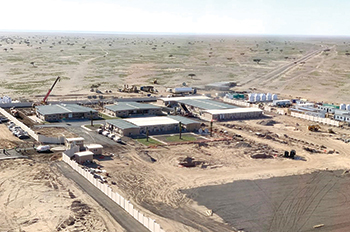 |
|
Project Base Camp was opened in February 2019. |
Pagano says TRSDC currently has over SR10 billion in contracts in the market for construction, development and operation of the various assets that will make up the destination, and will continue to release tenders throughout the development of the project. In 2019, most tenders will focus on the enabling infrastructure, but tenders will also be issued for utilities and the initial assets in Phase One.
Recently, a contract was awarded for a 1 million sq m landscape nursery to a joint venture between Saudi Arabia’s Nesma Trading Company and UAE-based Professional Landscape Company (see Saudi Focus, Page 19).
Talks are also under way with major luxury hotel brands, with positive feedback having been received on the quality of the destination and the growth opportunity presented by the development of the Saudi tourism industry.
Pagano says TRSDC is keen to encourage private sector participation in the project, However, for companies seeking to get involved, there is a pre-qualification process that can be initiated via the company’s website.
“We are seeking to work with companies that can not only rise to the challenge of developing the destination but who also understand and align with our commitment to sustainable development,” he remarks.
“From a procurement perspective, we are only working with partners who share our commitment to sustainability and the environment, as well as wider values on how workforces and suppliers are treated. This has, therefore, fed into the timeframes and decision-making processes to ensure our approach is consistently applied across the development,” Pagano adds.
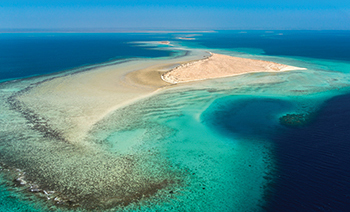 |
|
The masterplan designates nine islands as sites of significant conservation value. |
A key priority on site at this stage, he says, is the development of enabling infrastructure such as temporary roads as well as jetties to access more remote islands within the destination. A temporary bridge will connect the shore to the hub island that will be the focal point of Phase One development and will facilitate the transportation of materials.
Commenting on the challenges of the project, Pagano says while the remote nature of the destination is indeed a major issue, a more important challenge is to develop it in a way that minimises the project’s environmental impact.
“Obviously, the lack of core infrastructure at the destination is both a strength and a weakness,” he states. “The unspoiled nature of the destination is a key reason why people would want to visit it, but this means that we are required to develop basic infrastructure from scratch.
“This gives a degree of flexibility, especially in terms of installing renewable energy solutions, but it also creates a logistical challenge in moving people and materials around the site. For example, to develop the hub island we will need to construct a temporary bridge to move materials to and from the site.”
Pagano says their timeframes are dictated by a complete dedication to reducing the project’s environmental footprint as far as possible. All enabling works will employ modern construction technologies, including prefabricated modular construction (to fabricate assets off-site), to minimise the environmental impact of the development.
At the same time, the utilities network is being developed and the site is being prepared for its installation. But this, Pagano says, also creates another level of logistical challenge insofar as the prefabricated structures then have to be transported and installed. Currently, different ways of managing this are being explored with specialist marine and offshore contractors.
Due to its remote location, workers need to be housed at the site in the construction village. “Our approach to accommodating staff and the construction workforce recognises that a healthy, happy workforce is key to the delivery of the destination, in line with our commitment to set new standards at every stage of the development,” Pagano comments.
He says, given that the destination is remote from other large urban areas, the construction village is being built with a focus on creating a community feel, with residential buildings positioned to form neighbourhoods around a centralised area which will be equipped with a range of recreational facilities including cricket pitches, volleyball and basketball courts, plus a gym, pool and cinema.
For the local Saudi communities, the project will create significant opportunities, directly employing over 35,000 people and supporting an equivalent number of jobs in the wider community by generating opportunities for local businesses and supporting industries.
“By placing sustainability and the environment at the heart of every decision we make, we are creating something that we believe will flourish well into the future in a destination that will continue to fascinate,” Pagano concludes.





















_0001.jpg)


.jpg)
















.jpg)








.jpg)



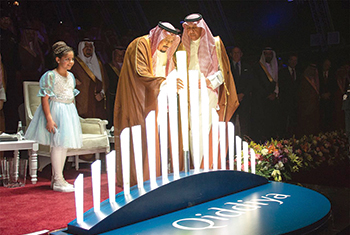
.jpg)
